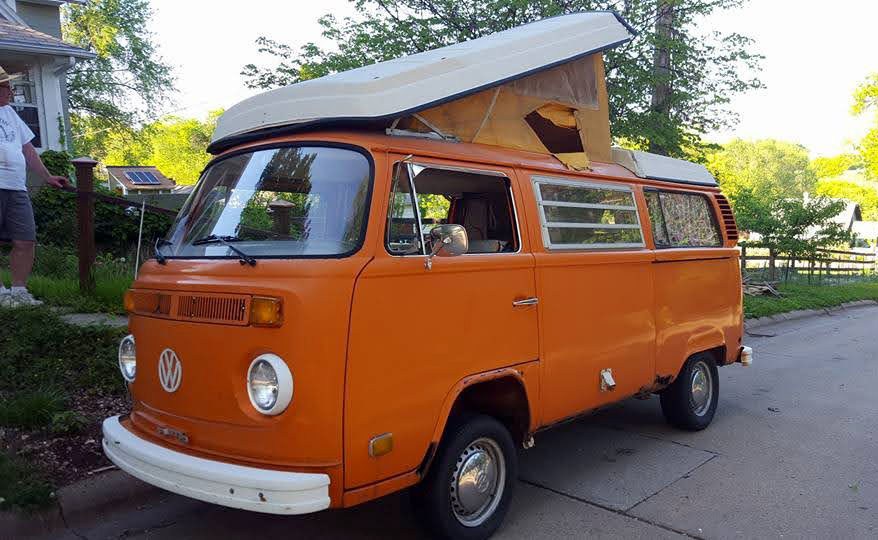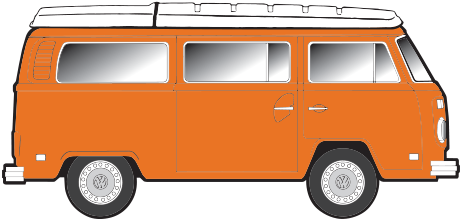About “Sparky”
VINTAGE ADVENTURER | MOBILE AD AGENCY
“Sparky” the 1973 Volkswagen Westfalia

After decades of wanting a VW bus I found this one on Facebook Marketplace and just had to have it. Owning a vintage Volkswagen Westfalia camper can be a uniquely enjoyable experience for several reasons:
- Nostalgic Charm: These buses embody a sense of nostalgia, harking back to the 1960s and 1970s, a time often associated with freedom, adventure, and the open road. The classic design and vintage feel can evoke fond memories and a connection to the past.
- Unique Style: The Westfalia camper is iconic in design, with its distinctive pop-up roof and compact yet functional interior. This sets it apart from modern vehicles and RVs, making it a head-turner and conversation starter wherever it goes.
- Community and Camaraderie: There’s a strong community of VW camper enthusiasts. Owning a Westfalia can introduce you to a world of fellow enthusiasts, meet-ups, and clubs. This community aspect can be a source of friendship, advice, and shared experiences.
- Simplicity and Slower Pace: The VW bus encourages a simpler, more laid-back way of traveling. Without the high-tech amenities of modern campers, it offers a more authentic, hands-on experience, bringing you closer to the basics of road-tripping and camping.
- Versatility and Adventure: These campers are compact enough to navigate city streets yet spacious enough for comfortable camping, making them ideal for various adventures. Whether it’s a weekend getaway or a longer road trip, the Westfalia camper is a versatile companion.
- Restoration and Customization: For many, part of the fun is restoring and customizing their camper. It’s a hobby that allows owners to put their personal touch on their vehicle, from restoring original features to adding modern conveniences.
MOBILE ADVERTISING AGENCY

During the weekday, “Sparky” is a dynamic, roving advertising agency. Omaha Advertising is a comprehensive marketing and public relations firm helping promote businesses, nonprofits, and government bodies across the Midwest.
Founded in 2004, Omaha Advertising now boasts a rich portfolio of services like captivating video production, innovative graphic design, sleek website development, engaging social media content, and adept media relations, among other creative services.
The cherry on top? Working with us means you gain access to years of refined marketing experience at an economical rate, sidestepping the hefty costs typically associated with expanding your in-house team.
HISTORY OF THE VW WESTFALIA
The Volkswagen Westfalia Camper, a modified version of the Volkswagen Type 2 and later the Type 2 (T3), was available from the early 1950s until 2003. These customizations were carried out by Westfalia-Werke, based in Rheda-Wiedenbrück. The initial models, featuring a split-windshield design, were produced from 1950 to 1967. The camper variants, evolving through different models like the Kombi, Vanagon, LT Mk 1, and the Transporter, continued production up until 2003. Additionally, various other coachbuilders, such as Dormobile, EZ Camper, ASI/Riviera, Holdsworth, Danbury Motorcaravans, and VW Sun-Dial, also created camper versions based on the Transporter.
From 1951 to August 1958, Westfalia, the official Volkswagen camper converter, crafted around 1,000 Camper Box conversions. In August 1958, they introduced the SO (Sonderausführung or “special model”) range, which included models like the SO-23, -33, -34, -35, -42, -44, and -45.
These Westfalia Campers were not only available at Volkswagen dealers worldwide but also through the Tourist Delivery Program. This program allowed customers to collect their new van in Germany, use it in Europe, and then have VW ship it to their home. This option was particularly popular among American servicemen in the 1950s and 1960s.
From 1979 to 1992, the Westfalia Vanagon, also known as the VW Campmobile, was produced, continuing the legacy of these unique and versatile vehicles.
In 1973, Volkswagen unveiled the ‘Late Bay’ model. This iteration featured a significant redesign, including square-style bumpers replacing the previous wrap-around design, and front indicators that were repositioned to the new grille. Additionally, it offered options for larger engine sizes, enhancing the bus’s overall reliability.
This model also marked a significant advancement in safety features. It included upgraded brakes, a crumple zone for improved impact resistance, and a reinforced passenger cell for added safety.
Various companies, including Devon, Viking, Danbury, Dormobile, and Westfalia, adapted the Late Bay models into campervans, further broadening their appeal and versatility.
